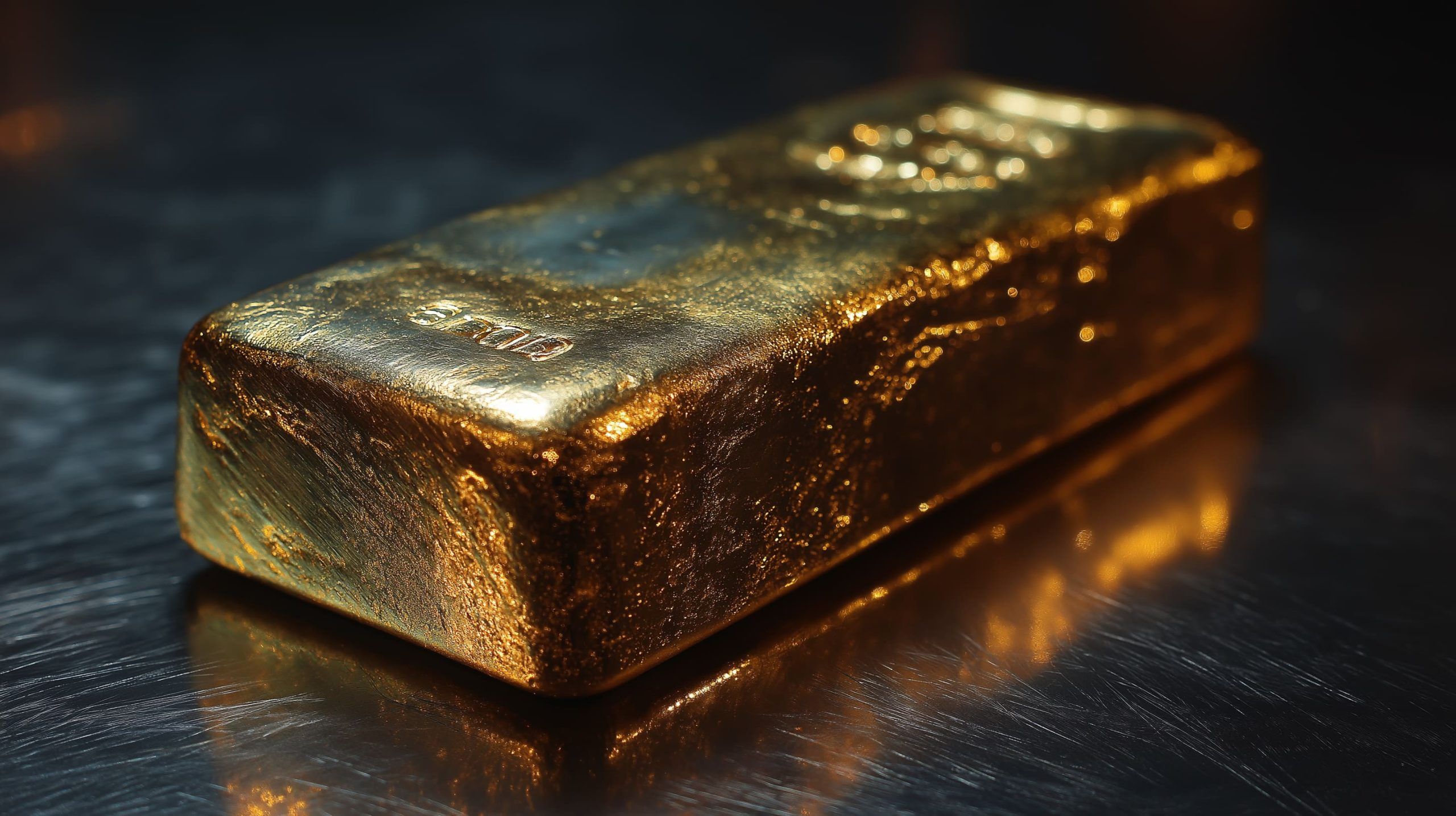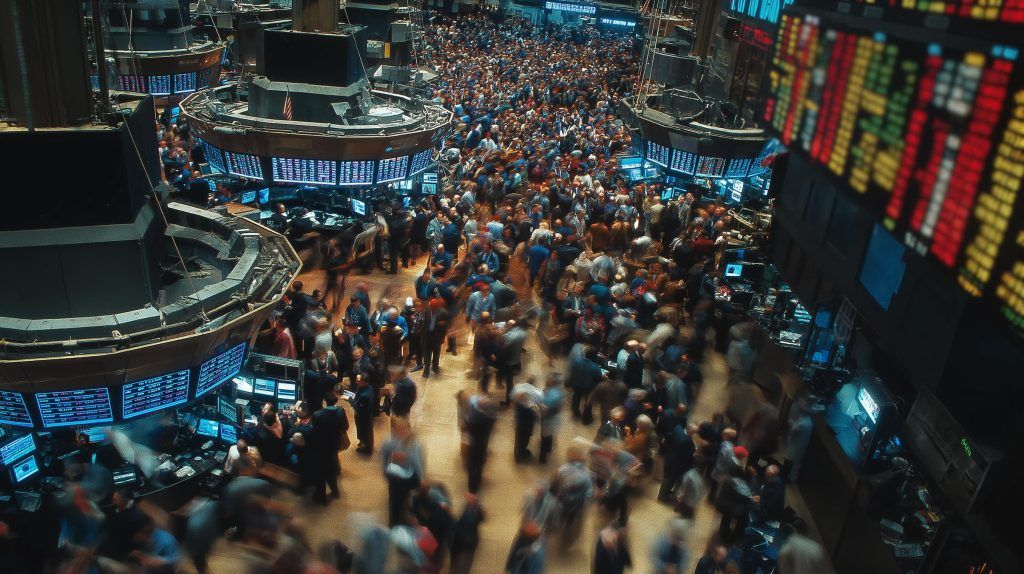Key Facts: Gold was trading around $4,015/oz on Nov 1, 2025 [1], just below its late-October peak of about $4,378/oz [2]. This marks roughly a 50–60% surge in 2025 (far outpacing stocks) [3] [4]. Key drivers include Fed rate-cut expectations (U.S. CPI at ~3%) [5] [6], geopolitical safe-haven flows (trade wars, conflicts) [7] [8], and record investment demand (central bank buys and ~$64 billion of ETF inflows YTD) [9] [10]. Many analysts now forecast further gains: JP Morgan calls gold its “highest conviction long” (target ~$5,055 by late 2026) [11], while Bank of America and SocGen see ~$5,000/oz by 2026 [12]. Short-term volatility is high – recent Fed and trade-news swings have caused 3–5% daily moves – but the long-term trend remains sharply bullish.
Current Price and Recent Trend
As of the last trading session, spot gold was near $4,015 per ounce [13]. After a mid-October record run to about $4,378/oz [14], gold has consolidated around the $4,000 mark. In late October, the price dipped below $3,970 before bouncing back above $4,000 by Oct 29 [15]. For example, gold fell to ~$3,970 on Oct 28 then rallied ~2% to $4,028 on Oct 29 [16]. By Oct 31 it traded around $4,012/oz [17]. According to reports, October’s surge left gold up roughly 60% year-to-date [18], making 2025 its strongest rally since the 1970s [19]. The recent pullback (~8% off the high) reflects profit-taking and technical consolidation [20] [21]. Over the past month, gold has still gained ~3.6% (versus Sep) and is +46% year-on-year [22]. In short, gold remains near historic levels but is trading in a choppy range ($3,970–4,080) after the October volatility [23] [24].
Fed Policy, Inflation and Dollar Impact
A major driver of the rally has been U.S. Fed rate-cut expectations. Softer inflation – U.S. CPI was about +3.0% year-over-year in September [25] – has convinced markets that the Fed will soon ease policy. Before the Oct 29–30 meeting, traders priced in nearly a 25 bp cut at that meeting [26]. After the Fed delivered a quarter-point cut on Oct 29, gold initially jumped. However, Fed Chair Powell’s cautious remarks (saying a December cut was “not a foregone conclusion”) lifted the U.S. dollar [27] [28]. A stronger dollar makes gold pricier for foreign buyers, slightly pressuring bullion. [29] [30]. In early November, the Bloomberg Dollar Spot Index hit a three-month high [31]. In general, lower real interest rates (due to Fed cuts) are bullish for gold, while the recent dollar strength has been a headwind [32] [33].
Fed policymakers’ messaging remains dovish-leaning overall. For instance, Fed speakers have emphasized “data-driven caution” as inflation persists [34]. Analysts note that gold tends to “do well in low-interest-rate environments” [35], so markets see continued Fed easing as supportive. Still, near-term fluctuations will track Fed policy news and U.S. economic data (e.g. November CPI).
Geopolitical and Safe-Haven Factors
Gold’s safe-haven appeal has been another powerful force. Persistent global conflicts and trade tensions keep investors seeking refuge in bullion. In 2025, wars in Ukraine and the Middle East have intermittently spiked risk aversion [36]. For example, during renewed U.S.–China trade jitters in mid-October, Reuters reported traders “flocked to the safe-haven metal” [37]. White House policies under President Trump (threatening new tariffs, sanctions on Russian energy) also stoked risk premiums, which analysts say support gold’s rise [38] [39]. Peter Grant of Zaner Metals notes that trade flare-ups, a recent U.S. government shutdown, and Fed easing expectations are all “supporting gold,” even potentially pushing it to $5,000 by mid-2026 [40].
Many investors describe the backdrop as a “perfect storm” for gold. Ts2 reports highlight factors like ongoing trade/tech tensions, geopolitical uncertainty, and central-bank buying, which together have created a “very positive macroeconomic and geopolitical background for safe‑haven assets” [41] [42]. As analyst Zain Vawda (OANDA) put it, if U.S.-China relations deteriorate further that “could be the spark gold needs to cross the $5,000/oz barrier” [43].
Central Bank Buying, ETF Flows and Demand
On the demand side, central banks and investors have been voracious buyers. Official gold purchases have reached multi-decade highs. In fact, central banks have added roughly 1,000+ tons per year since 2022 [44]. Metals Focus estimates about 900 tonnes of net purchases in 2025 (far above the 2016–21 average of ~457t) [45]. Countries from China and India to Turkey continue to diversify reserves into bullion.
Retail and institutional investors also fueled demand. Gold-backed ETFs saw record inflows in 2025. For example, SPDR Gold Shares (GLD) attracted ~$35 billion by end-Sept [46], and World Gold Council data show roughly $64 billion poured into global gold ETFs through September [47] [48]. (These flows hit $17.3B in Sept alone [49].) Research notes that this “insatiable appetite” has drawn bargain-hunters when gold briefly retreats [50]. As JP Morgan observes, foreign holders of U.S. assets are “gradually redirecting small allocations into gold” [51].
By contrast, jewellery demand has fallen under high prices. Reuters reports Q2 2025 jewelry demand down ~14% from a year earlier [52] – the weakest since 2020. (China and India saw major drops as budgets strained at record prices.) This means the gold rally is driven almost entirely by investment and official buying rather than consumer jewelry.
Among related markets, gold mining stocks have surged. European and U.S. gold stock indexes were roughly +126% YTD [53], nearly doubling Gold Miners ETF (GDX). However, miners have been volatile: after gold peaked, miner ETFs fell (~–9% on Oct 22) as profit-taking hit the sector [54].
Analyst Commentary and Forecasts
Most analysts remain bullish on gold’s trajectory, albeit wary of volatility. Major banks have lifted their targets. For example, Bank of America now forecasts gold at $5,000/oz in 2026 (average $4,400) [55]. BofA notes that even with this year’s surge, gold is still “structurally under-owned” in portfolios [56]. SocGen likewise predicts $5,000/oz by end-2026 [57], citing unexpectedly strong ETF flows. JP Morgan’s commodity strategists call gold their “highest conviction long,” envisioning ~$5,055/oz by Q4 2026 [58]. Morgan Stanley raised its 2026 forecast to about $4,500/oz (mid-2026) on continued ETF and central-bank demand [59]. Standard Chartered sees a 2026 average of ~$4,490 (up from $3,875) [60]. Even HSBC bumped up its 2025 average forecast to $3,355/oz [61], acknowledging the stronger rally.
That said, some experts caution about short-term pullbacks. Technical analysts point to overbought conditions. Evercore’s Tony Sycamore warned gold was “massively stretched, massively overbought” in October [62]. Australian strategist Carl Capolingua notes a key resistance (“point of supply”) near $4,392/oz [63]; he suggests a sustained drop below that could cap the bull market. VanEck’s David Schlesser and Saxo’s Ole Hansen argue that after October’s correction, the original bull-case factors remain intact and could still drive new highs [64]. In Ts2’s analysis, both bullish (Metals Focus’s Piggott, HSBC, etc.) and bearish (Goldilocks research, technical signals) views are noted [65].
Short-Term and Medium-Term Outlook
In the short term (weeks to a few months), markets expect high volatility. Gold may oscillate around current levels as investors digest data and geopolitics. A pause or mild pullback seems likely after October’s sharp moves – analysts expect some profit-taking and consolidation [66] [67]. For instance, Standard Chartered warns of “near-term consolidation” as seasonal restocking slows [68]. Fed meeting cues (especially comments from Powell) and U.S. inflation reports (next CPI) will be key catalysts. A surprise uptick in inflation or Fed hawkishness could trigger a sell-off, while dovish surprises or new conflicts could rekindle rallies.
In the medium term (over 6–12 months), the consensus leans bullish. Most top banks project new all-time highs. Forecast averages for end-2026 cluster around $4,500–5,000/oz [69] [70]. These forecasts assume continued Fed easing, ongoing geopolitical strain, and heavy central-bank demand. As Ts2 notes, “even if prices retreat, the long-term trend (Fed cuts, central-bank buying, uncertainty) still favors higher gold” [71].
Related Trends: ETFs and Safe-Haven Demand
Beyond price forecasts, other trends are worth watching. ETF flows are now at historic levels – the World Gold Council notes that fund holdings hit a multi-year high [72]. Any reversal (or continued inflows) in these flows will influence price momentum. Safe-haven demand remains strong: surveys show retail investors in India and China still buying on dips [73]. Conversely, a resolution of trade conflicts or geopolitical de-escalation could temporarily reduce demand for gold.
Mining sector news can also color the gold outlook. Rising gold prices encourage exploration and output, but major cost pressures (energy, labor) limit how fast supply can ramp up. No specific mine disruptions have grabbed headlines recently, but keep an eye on producers’ guidance. In general, however, physical supply is relatively inelastic, so demand shifts have outsized price impact.
Summary
Gold’s rally into late 2025 has been historic, driven by a confluence of dovish Fed bets, persistent inflation, global tensions and record demand. As of Nov. 2, 2025, gold is consolidating around $4,000–4,100/oz, off October’s all-time high. Analysts remain broadly bullish: many expect gold to continue climbing toward the $4,500–5,000/oz range in 2026 [74] [75]. However, short-term swings are likely as markets react to Fed minutes, inflation data, and trade developments. For now, gold’s role as a hedge against inflation and geopolitical uncertainty keeps it firmly in focus for investors.
Sources: Authoritative financial news and analysis reports were used, including Reuters and Bloomberg articles and recent expert commentary [76] [77] [78] [79], as well as TechStock² (ts2.tech) research pieces [80] [81]. All forecasts and data points are drawn from these sources.
References
1. economictimes.indiatimes.com, 2. economictimes.indiatimes.com, 3. ts2.tech, 4. ts2.tech, 5. ts2.tech, 6. ts2.tech, 7. www.reuters.com, 8. ts2.tech, 9. www.reuters.com, 10. ts2.tech, 11. ts2.tech, 12. www.investing.com, 13. economictimes.indiatimes.com, 14. economictimes.indiatimes.com, 15. ts2.tech, 16. ts2.tech, 17. ts2.tech, 18. ts2.tech, 19. ts2.tech, 20. ts2.tech, 21. ts2.tech, 22. economictimes.indiatimes.com, 23. ts2.tech, 24. economictimes.indiatimes.com, 25. ts2.tech, 26. ts2.tech, 27. ts2.tech, 28. ts2.tech, 29. ts2.tech, 30. economictimes.indiatimes.com, 31. economictimes.indiatimes.com, 32. ts2.tech, 33. economictimes.indiatimes.com, 34. economictimes.indiatimes.com, 35. www.reuters.com, 36. ts2.tech, 37. ts2.tech, 38. www.reuters.com, 39. ts2.tech, 40. www.reuters.com, 41. ts2.tech, 42. ts2.tech, 43. ts2.tech, 44. www.reuters.com, 45. www.reuters.com, 46. ts2.tech, 47. ts2.tech, 48. www.investing.com, 49. www.investing.com, 50. ts2.tech, 51. ts2.tech, 52. www.reuters.com, 53. ts2.tech, 54. ts2.tech, 55. www.investing.com, 56. www.mining.com, 57. www.investing.com, 58. ts2.tech, 59. www.reuters.com, 60. www.investing.com, 61. ts2.tech, 62. ts2.tech, 63. ts2.tech, 64. ts2.tech, 65. ts2.tech, 66. www.investing.com, 67. ts2.tech, 68. www.investing.com, 69. ts2.tech, 70. www.investing.com, 71. ts2.tech, 72. www.reuters.com, 73. ts2.tech, 74. ts2.tech, 75. www.investing.com, 76. www.reuters.com, 77. www.reuters.com, 78. www.reuters.com, 79. www.investing.com, 80. ts2.tech, 81. ts2.tech







